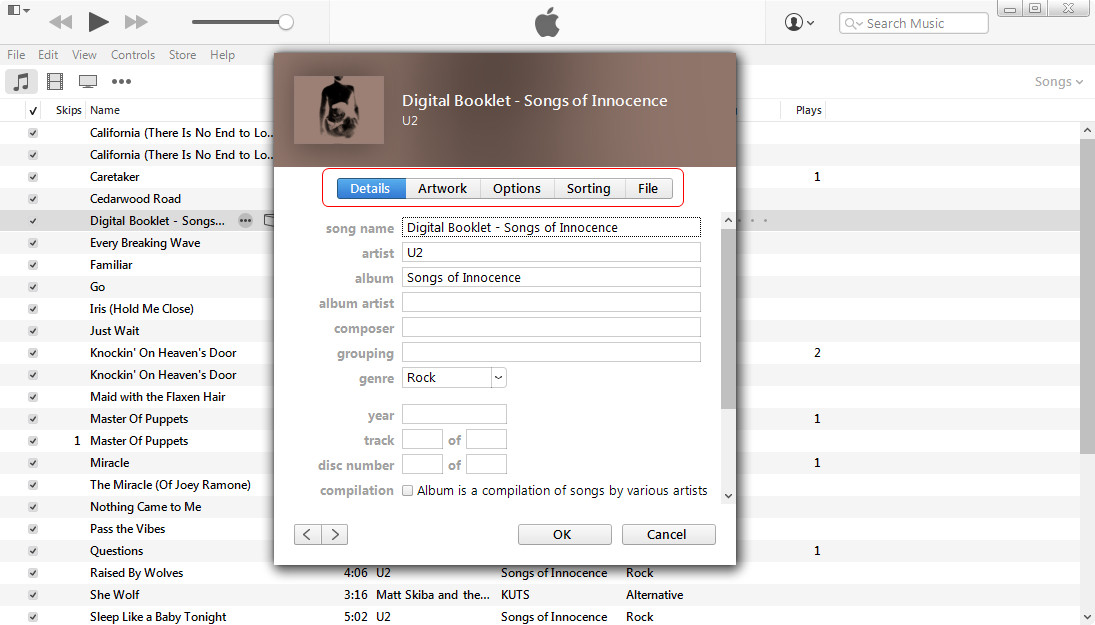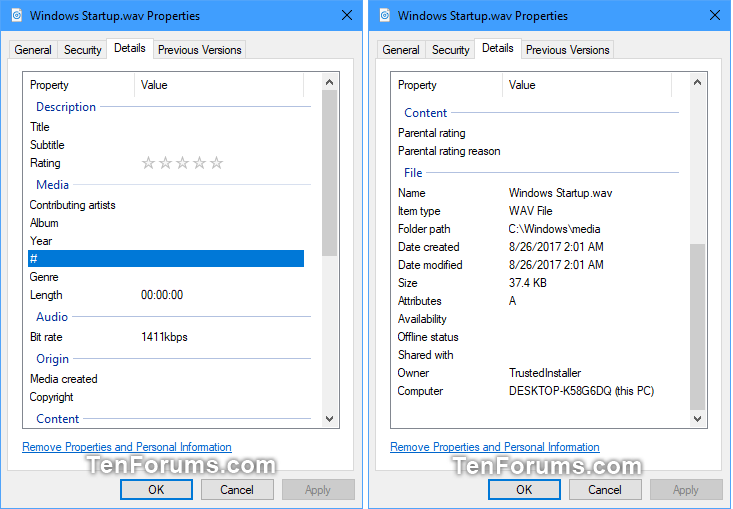The universal tag editor and more. Mp3tag is a powerful and easy-to-use tool to edit metadata of audio files. It supports batch tag-editing of ID3v1, ID3v2.3, ID3v2.4, iTunes MP4, WMA, Vorbis Comments and APE Tags for multiple files at once covering a variety of audio formats. If you want to edit properties of a.mp3 file on Windows, you can follow these steps: 1. Open Windows Explorer and locate the.mp3 file. Right-mouse click on the.mp3 file and select 'Properties'. You see the file properties dialog box. Click the 'Details' tab. Click the 'Value' field of the property you want to edit.
For Microsoft Windows users who want to edit audio files, we highly recommend WavePad, a great program you can download for free. This program supports multiple audio formats, including wav, mp3, vox, gsm, real audio, au, aif, flac, ogg, and many more. Below are some basic steps for editing an audio file using WavePad.
The official WavePad page and download is found here.
Before following any of the steps below, you must have WavePad downloaded and installed on your computer.
Cut or trim the beginning, end, or part of a song
You can cut or trim a song or audio file using your keyboard or mouse. Below are the steps for each of these methods.
Using the mouse
- Using the mouse, highlight the portion of the audio (green lines) you want to delete.
- Once highlighted press the delete key.
- Save the file if you're satisfied with the changes.
Using the keyboard
- Play the song until it gets to the point before or after that you want to delete. Then, hold down the Shift key, and press the Home key or End key to highlight everything from that point.
- Once highlighted, press the delete key.
- Save the file if you're satisfied with the changes.

If at any time you delete something you didn't want to, click the Undo option on the Home tab or press Ctrl+Z.


Copy section of audio or song file
- Using the mouse, highlight the portion of the audio (green lines) you want to copy.
- Once selected, click the Copy button on the Home tab at the top of the program window.
- Next, click the New option on the Home tab to open a new, blank audio file.
- Click the Paste option on the Home tab to add the copied audio to the new audio file.
- Save the new audio file.
Trim, amplify, normalize, or other edits on multiple audio files
WavePad also has an excellent batch editing feature that allows you to perform any of the edit options on multiple files as you would on a single file. To do this, follow the steps below.
- Under the Tools tab, select Batch Converter.
- In the Batch Converter window, click the Add File button to select files. If you have all the files you want to edit in a single folder, you can click the Add Folder button and select that folder instead.
- Once the files are selected, click the Next button.
- Unless you already have a script, click the Add button and select the action you want to perform. For example, if you want to normalize the audio in each of the files, highlight Normalize and click Add.
- Once you've selected all the audio settings you want to adjust, click the Next button.
- Select how you want to output the files and where you want to output them to, then click Finish.
Additional information
- See our audio and MP3 definitions for further information and related links.
For Microsoft Windows users who want to edit audio files, we highly recommend WavePad, a great program you can download for free. This program supports multiple audio formats, including wav, mp3, vox, gsm, real audio, au, aif, flac, ogg, and many more. Below are some basic steps for editing an audio file using WavePad.
The official WavePad page and download is found here.
Before following any of the steps below, you must have WavePad downloaded and installed on your computer.
Cut or trim the beginning, end, or part of a song

You can cut or trim a song or audio file using your keyboard or mouse. Below are the steps for each of these methods.
Using the mouse
- Using the mouse, highlight the portion of the audio (green lines) you want to delete.
- Once highlighted press the delete key.
- Save the file if you're satisfied with the changes.
Using the keyboard
- Play the song until it gets to the point before or after that you want to delete. Then, hold down the Shift key, and press the Home key or End key to highlight everything from that point.
- Once highlighted, press the delete key.
- Save the file if you're satisfied with the changes.
If at any time you delete something you didn't want to, click the Undo option on the Home tab or press Ctrl+Z.
Copy section of audio or song file
- Using the mouse, highlight the portion of the audio (green lines) you want to copy.
- Once selected, click the Copy button on the Home tab at the top of the program window.
- Next, click the New option on the Home tab to open a new, blank audio file.
- Click the Paste option on the Home tab to add the copied audio to the new audio file.
- Save the new audio file.
File Properties Editor Windows 10
Trim, amplify, normalize, or other edits on multiple audio files
How To Edit Properties Of Wav Files File
WavePad also has an excellent batch editing feature that allows you to perform any of the edit options on multiple files as you would on a single file. To do this, follow the steps below.
- Under the Tools tab, select Batch Converter.
- In the Batch Converter window, click the Add File button to select files. If you have all the files you want to edit in a single folder, you can click the Add Folder button and select that folder instead.
- Once the files are selected, click the Next button.
- Unless you already have a script, click the Add button and select the action you want to perform. For example, if you want to normalize the audio in each of the files, highlight Normalize and click Add.
- Once you've selected all the audio settings you want to adjust, click the Next button.
- Select how you want to output the files and where you want to output them to, then click Finish.
Additional information
Edit Wav File Tags
- See our audio and MP3 definitions for further information and related links.